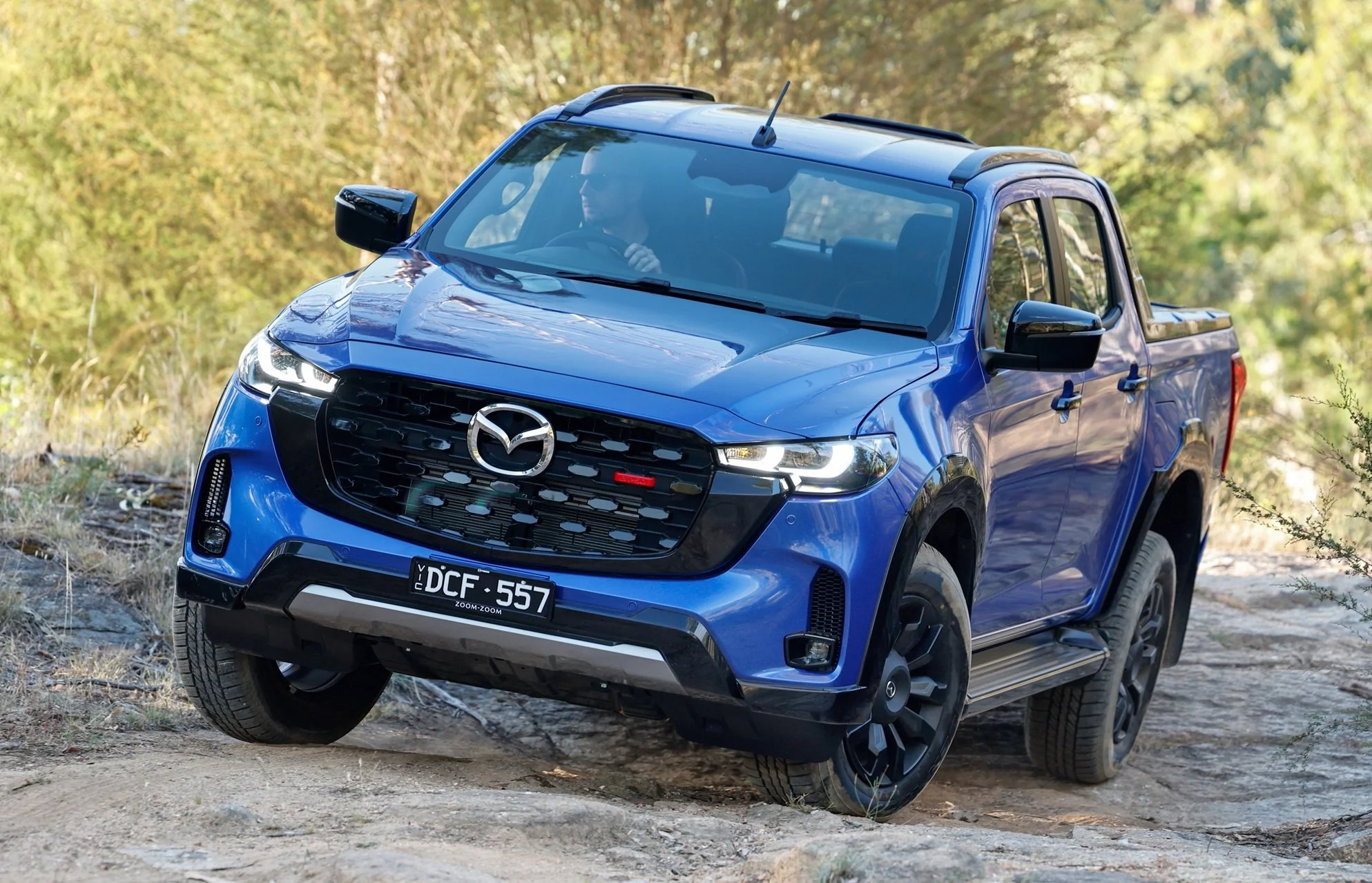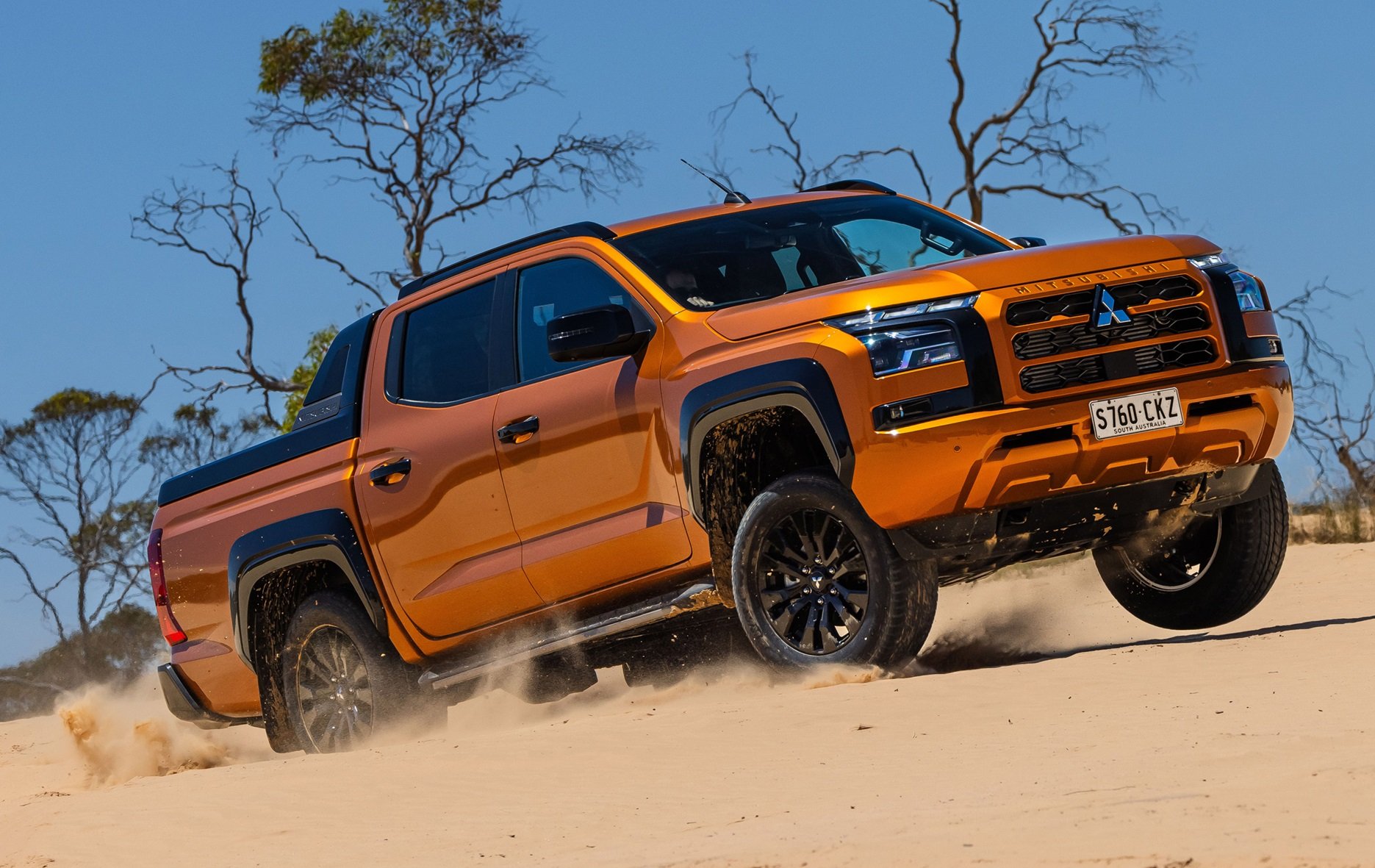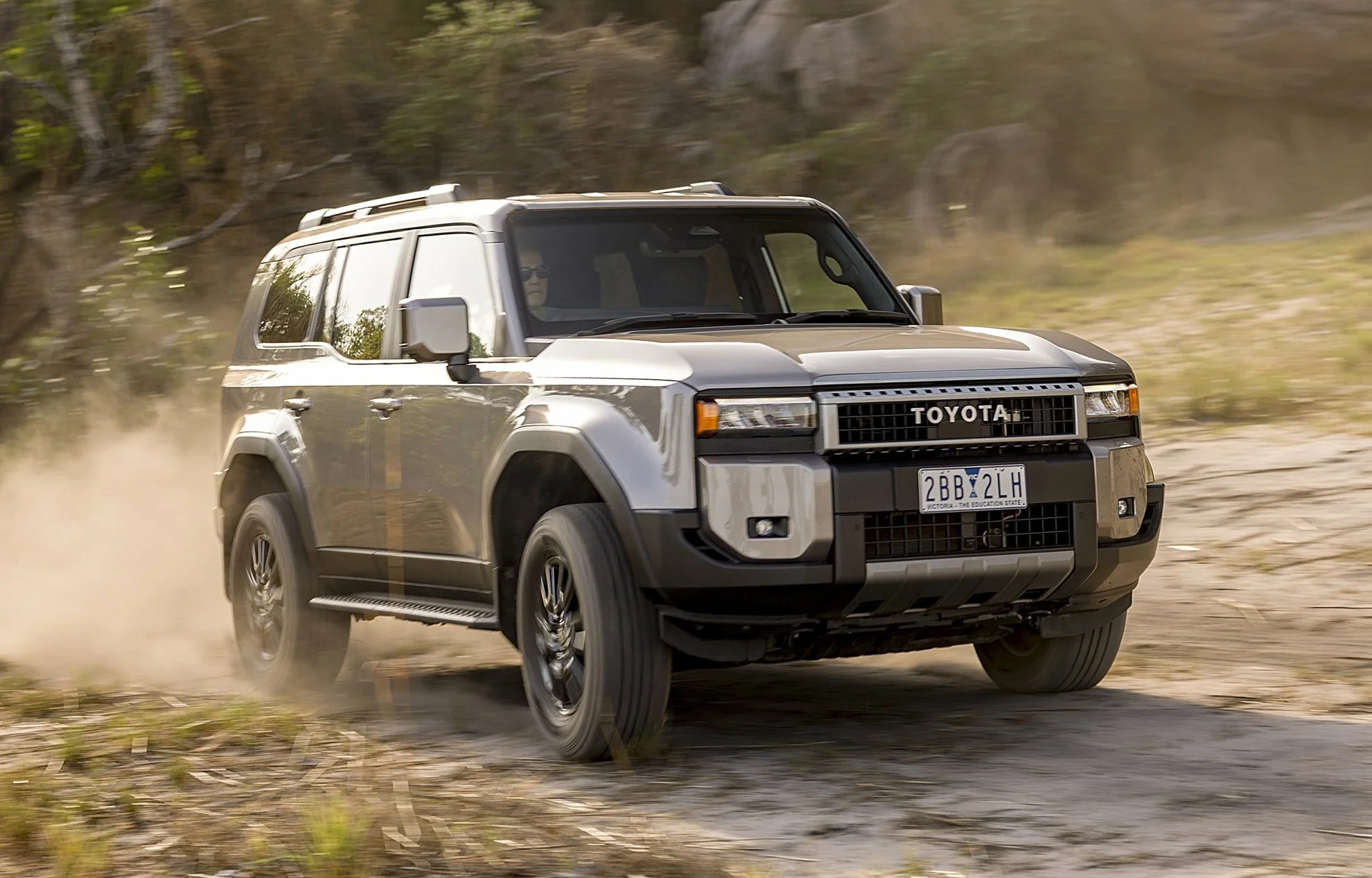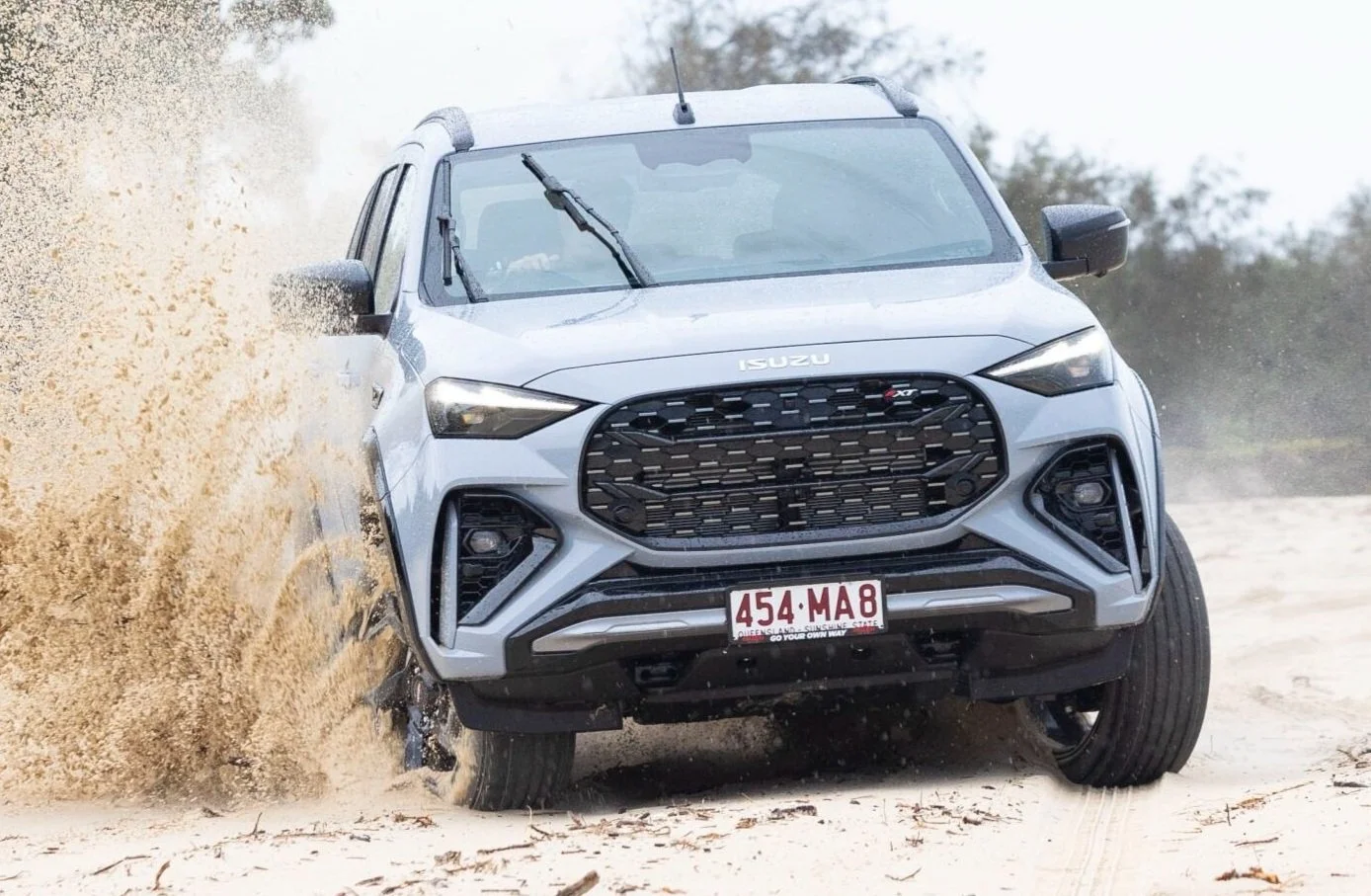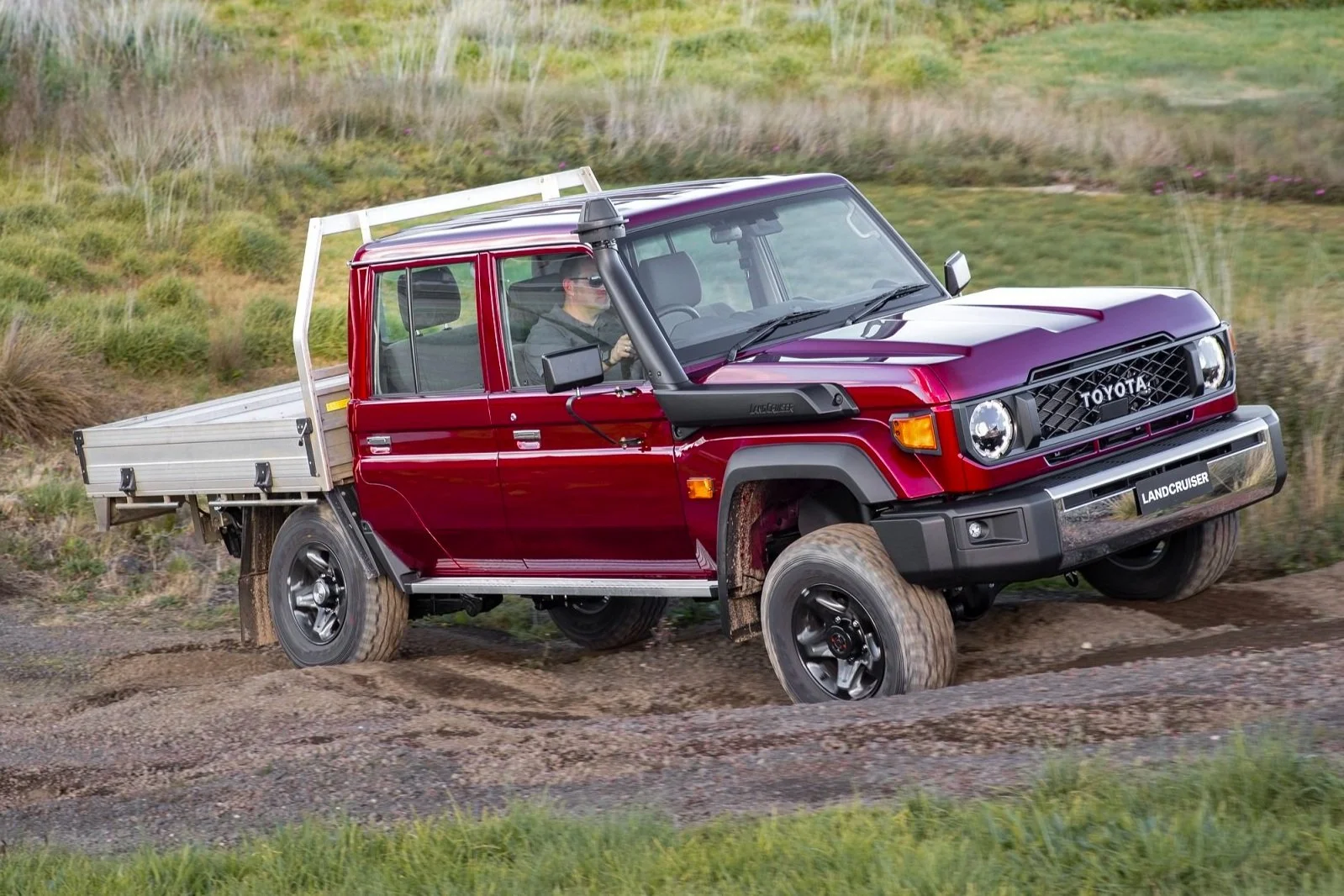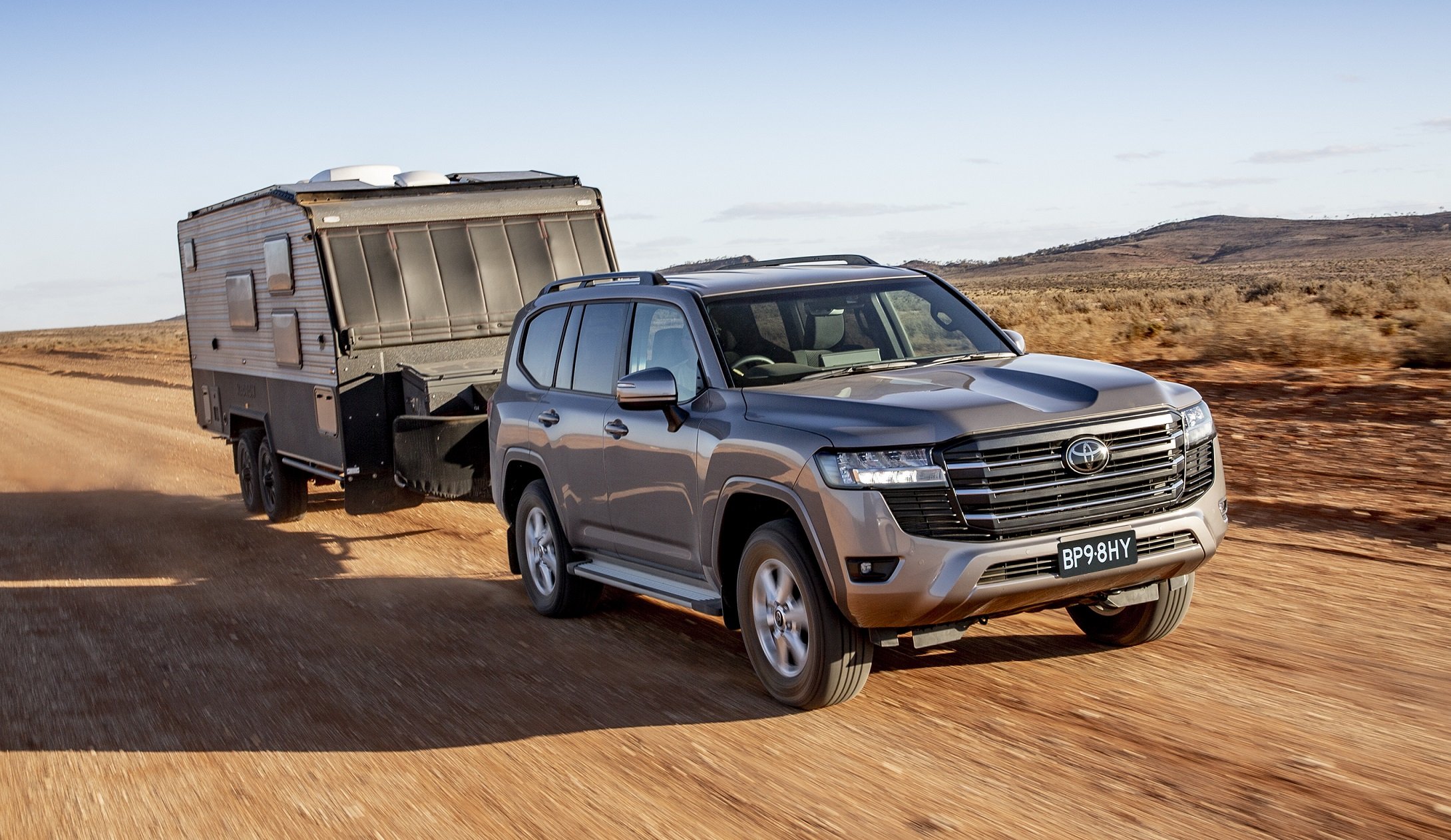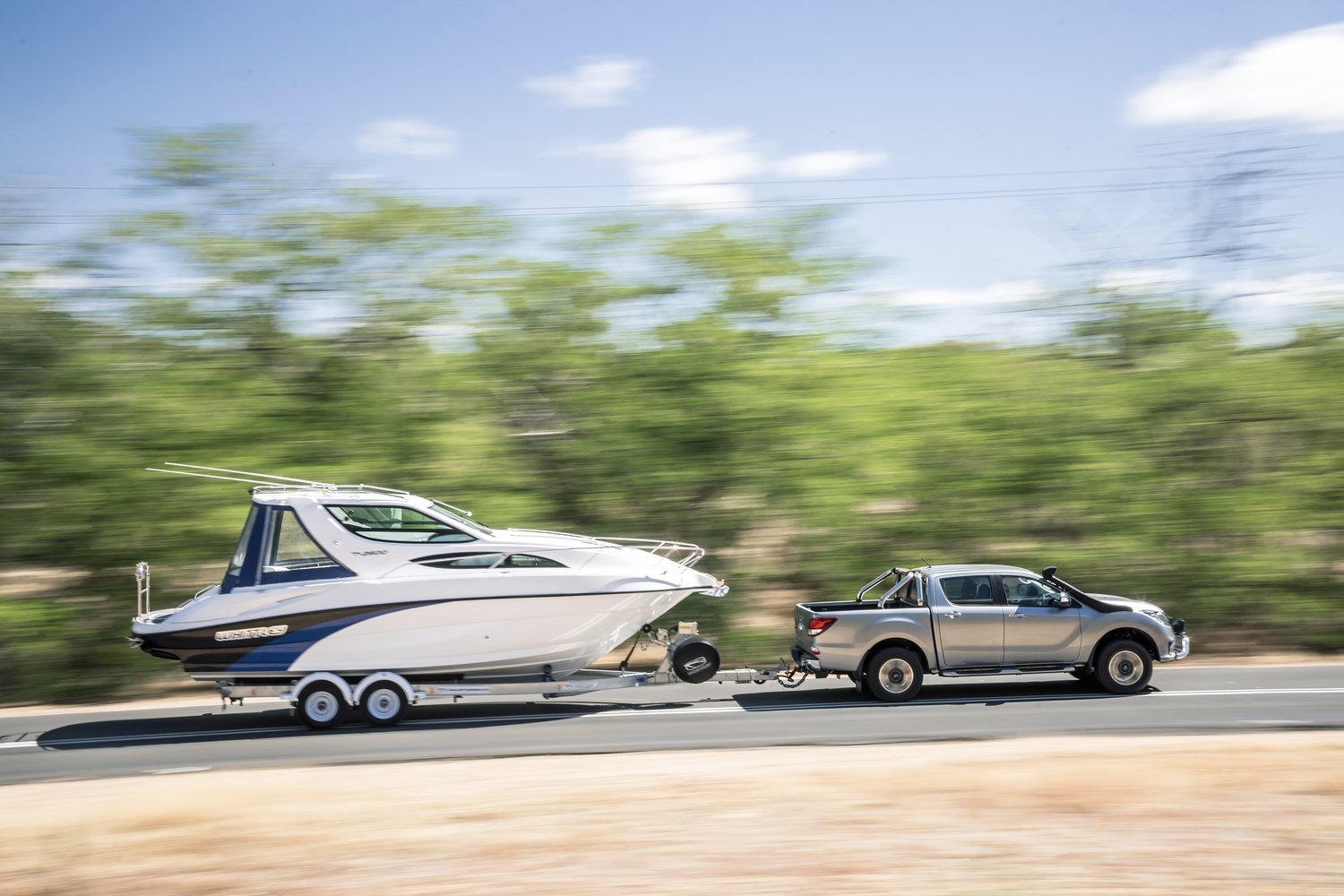
BEST HEAVY TOW VEHICLES
Towing heavy trailers is not a passive, flippant exercise - it needs to be taken seriously. Making a mistake while towing can damage equipment, injure people, or much worse.
Review Summary
Getting heavy towing right starts with choosing the most appropriate vehicle for the assignment - and that means prioritising safety over bravado.
If you’re only towing up to 1200-1500kg, or taking a light trailer to the tip, this is more of a ‘light/medium towing’ situation, making these vehicles somewhat ‘overkill’.
Here are the best choices for towing, separated into respective weight classes, so you don’t get out of your depth…
Bear in mind, manufacturer-specified maximum tow capacities are often higher than my recommendations below. With heavy towing, conservatism = safety, and the heavier the tow vehicle, relative to the trailer, the more stable the combination, especially at highway speeds.
Confused about towing? Don’t know your ATM from your GCM? Jump down to the section in this guide on choosing the right vehicle and demystifying the technical terms.
Reviews in brief
TRAILER WEIGHT: 1500kg - 2000kg
Hyundai Santa Fe / Kia Sorento


The 2.2-litre turbo-diesel powerplant making 140kW in the Sorento is a good light-duty towing choice, while the Santa Fe’s hybrid powertrain is okay without being excellent. You can also get Santa Fe in a 2.5L petrol turbo-4 which is also going to be find for moderate towing needs.
Santa Fe is limited to just 100kg of towball download and a maximum braked capacity of 1650kg, so towing needs to be light-duty. Sorento still has its fairly robust 2.2 diesel where towball download is 200kg with that 2000kg maximum braked capacity.
The Sorento’s 8-speed dual-clutch transmission, which was torture tested first-hand in the previous Santa Fe, is also a well-built and properly designed piece of the driveline that will happily endure 2000kg hauls, be it a boat, camper trailer, caravan or car trailer. Hyundai quotes 2500kg but I recommend peeling it back 20 per cent.
Sorento and Santa Fe have limits. They don’t have the hardcore components that make them heavyweight load-haulers. But as large family SUVs, be conservative and they’ll be more than adequate.
Kia Carnival
Carnival is a surprisingly good idea for a regular moderate towing vehicle, especially if you have a big family to take on adventures near or far.
GVM is 2876kg, with a maximum braked capacity of 2000kg, putting 200kg of download on the towball. So if you max-out the towing on Carnival, you still have a notional 542kg of payload remaining (when you subtract kerb weight & towball d/load from the GVM). That leaves you with a very plausible amount of available weight for the family and some gear, while remaining stable under towing conditions.
That’s what makes Carnival such an awesome platform to use in this mild towing context. You can almost do it all, with moderation.
Combined with the Hyundai/Kia 2.2-diesel and robust 8-speed dual-clutch transmission, it’s a supremely comfortable, highly practical and multi-role family transport option that flips the bird to mediocrity.
Hyundai Palisade
If you need a LandCruiser-style large, family-SUV that can do a little towing but only ever needs to go soft-roading, the Palisade is a smart choice next to Toyota’s so-called ‘King’.
Palisade is capable of towing up to 2200kg with the Load Assist Kit from Hyundai to get 180kg of download on the towball (it’s 100kg standard). Ultimate payload of 683kg is just 17kg shy of a $100K LandCruiser 300 GXL and is about 300-400kg lighter, meaning it drives better through corners while offering 8-seat 3-row functionality inside without being uncomfortable or gargantuan overall.
Hyundai’s 2.2L diesel with all-wheel drive, their robust 8-speed dual-clutch transmission, and full-size spare wheel mounted externally under the rear, Palisade makes for a strong long-distance family holiday cruiser with a camper trailer, caravan or modest-sized boat.
TRAILER WEIGHT: 2000kg - 2500kg
Mitsubishi Pajero Sport
Pajero Sport has to be the best value towing platform in Australia. It’s much more affordable than rivals like Toyota Fortuner and Ford Everest, without any substantial drawbacks.
The only real deficit is 500kg of claimed braked towing capacity, which is in fact a benefit because it increases your safe working limit; it keeps you from overcooking your towing assignment and waking up dead at the roadside. 3000kg is a sufficient, conservative limit that means you’re not in the macho towing arms race with other brands.
Super Select II is Mitsubishi’s industry benchmark 4WD transmission that allows in-motion activation below 100km/h and use of effectively AWD (4H) on high-traction surfaces - even while towing. If you hit bad weather, or need to exit soggy campgrounds, or get through washed-out, one-way-out backroads, this is a distinct advantage.
The 2.4 turbo-diesel is plenty powerful enough, 8.6L/100km is good fuel economy, and a payload of up to 730kg is definitely not lightweight, but remains much safer to operate.
Mitsubishi Triton
The new Mitsubishi Triton is an excellent heavy towing, off-roading and payload carrying value proposition.
It now has a heavily revised 2.4-litre sequentially activating bi-turbo engine making 150kW at just 1500 RPM - that’s barely above idle. You also get a dedicated transmission cooling system for extra heat management that will make hard work much more tolerable in harsh conditions.
The driveline is still one of the only utes on the Australia market that gets a centre differential that makes hard off-road driving almost effortless - you do still have to steer.
The tray will fit a Euro pallet (800x1200mm) and maximum braked towing capacity is rated by Mitsubishi Australia at 3500kg, with 350kg of permitted towball download. Maximum potential payload is over 1000kg on select model grades, and a heavy duty suspension pack is available.
The Triton’s interior is also a pretty nice place to sit for work and family duties. There’s wireless phone charging standard, heated leather seats and plenty of storage holes.
Mazda BT-50
BT-50 shares platform fundamentals with Isuzu D-Max, so if you’re expecting a wait on the D-Max, consider the Mazda instead.
If your ute will be used as more of a personal transport vehicle, perhaps only occasionally roughing it in hard-to-access places or in unpredictable circumstances, a BT-50 will offer a decent place to sit in for hours on end with multiple people on board.
It’ll also double as a very comfy suburban-dwelling family transport for weekend adventuring. Good towing platform with a 3500kg braked limit. Choose 4x2 for max payload. If you need heated seats for cold early starts, you need GT 4x4 spec.
You can save $3000 choosing manual over auto, but you’ll lose software-based safety tech that relies on an auto transmission.
Mazda offers decent customer support and generally does the right thing when you need help, and a big dealer network gives you options and plenty of onshore parts available when roadtripping interstate.
Ford Everest & Ranger
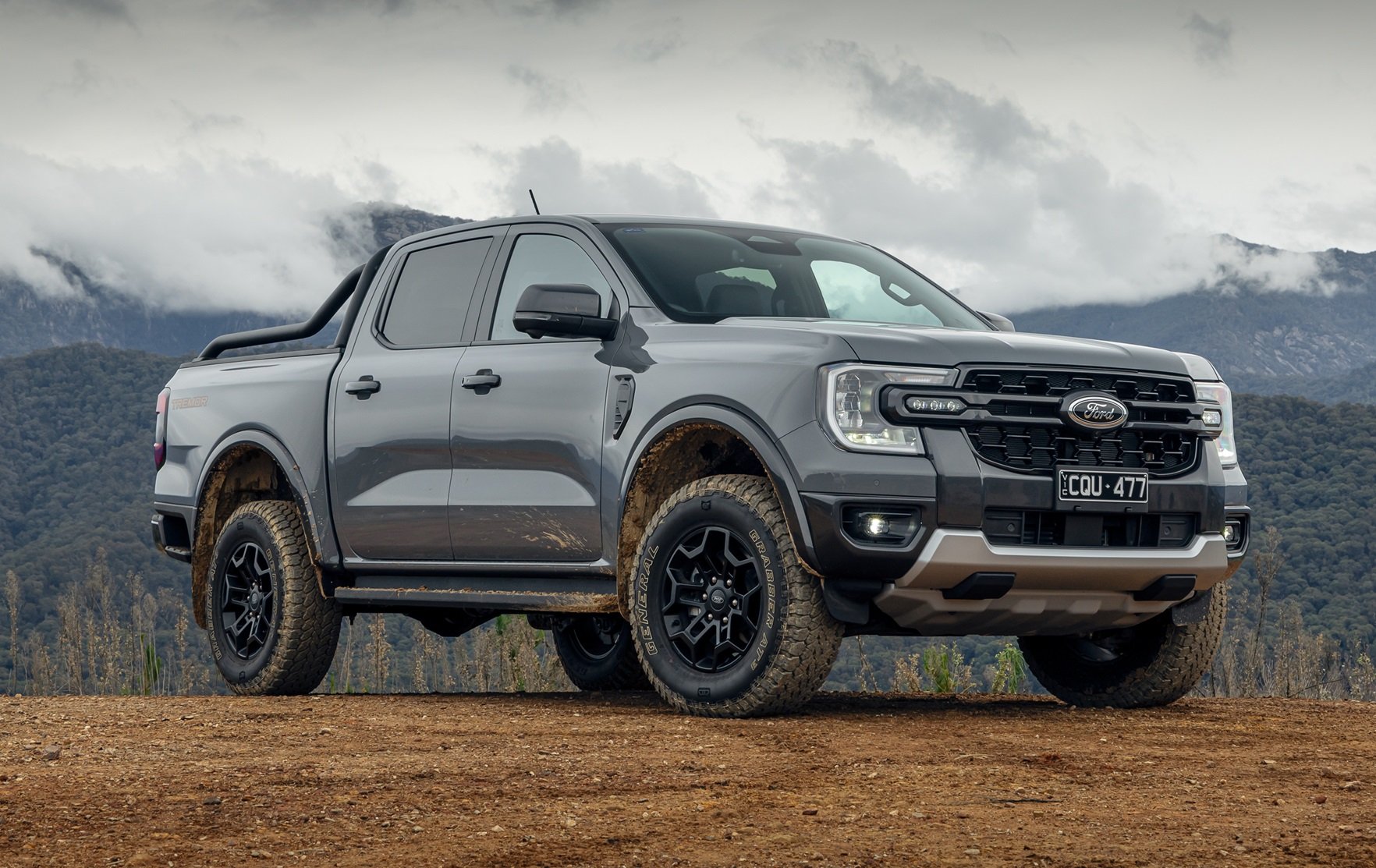
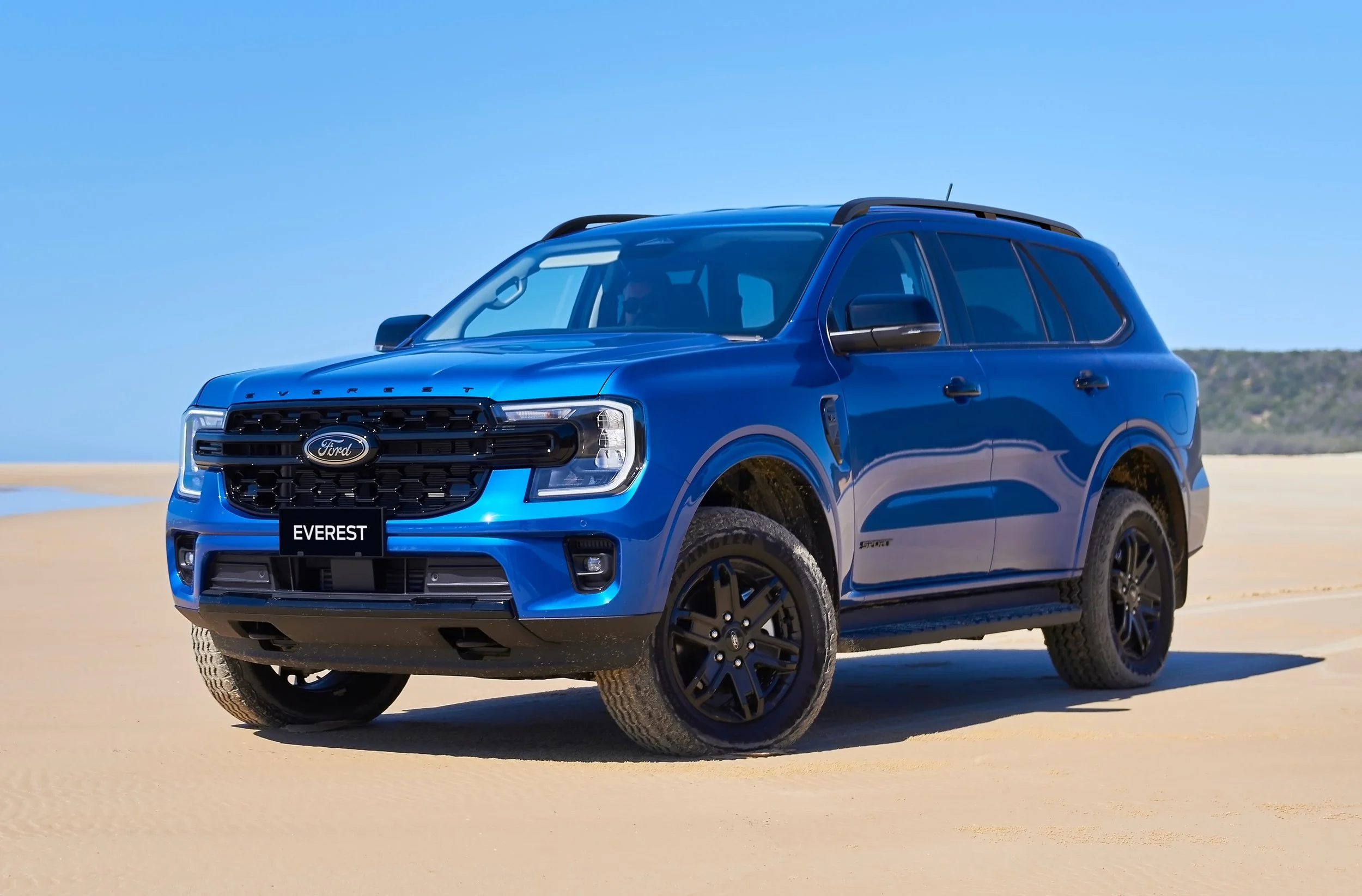
Ranger is ridiculously popular, Everest is smashing the sales charts and they’re the only mainstream ute/4WD wagon with a big V6 diesel. (VW Amarok shares Ranger’s fundamentals; so if you can’t get a Ranger/Everest, the Amarok is an alternative, if you dare deal with VW.)
Ranger/Everest’s V6 is the one you buy if you want maximum platform performance. The V6 in XLT is a solid multi-purpose work vehicle and family conveyance; because the 2-litre seems highly strung. Go Everest Trend if it’s a hard-working 4WD-only second vehicle and luxury features aren’t a priority.
If a heavy tool trailer is going to be connected 5 days a week, Ranger is a decent workhorse with good resale value, sex appeal and ample towing potential are plusses. Be mindful of dodgy dealers and Ford Australia’s poor overall support performance.
Avoid the 3.5-tonne towing limit for safety reasons. XLT payload is 949kg, making this a 3.2-tonne vehicle when fully laden, so drive with caution.
Toyota Prado
The LandCruiser capable of seven-seat school runs, big supermarket shops and the big lap. The 250 Series LandCruiser is bigger, but it’s quite different from the old 150 Series.
If you don’t want to think too hard about which 4WD wagon to buy, the new Prado looks retro and will be a beast off-road, and rated for 3500kg braked towing capacity.
Toyota has kept the 2.8 turbo-diesel, especially having fixed the DPF system and now fitted both AdBlue exhaust treatment and a 48-volt mild hybrid system.
Prices have increased overall, like every new car these days, but the range is now better suited to a range of buyer types, such as the base model which gets a centre differential to offer on-road permanent 4WD in high range, while all the hardcore off-road gear is for the enthusiast.
Toyota evolves in very small steps and this new Prado is a modest improvement over the old model, but Toyota makes mediocre vehicles that last. It’s hard to see the 250 Series not continuing that legacy.
Toyota Hilux
Hilux is hard to beat when it comes to resale value, towing and load carrying: 3500kg braked towing, 350kg towball download, and competitive payloads for respecive model grades which vary.
Just watch the GVM when hitching any trailer weighing more than 2500kg.
SR5 will be better suited for a more balanced life as both workhorse and family hauler including ‘premium cloth’ seats, sat-nav, LED lights, carpet, dual-zone A/C, 220-volt socket, 6 speakers, blindspot monitoring, rear parking sensors. But just remember utes are not comfortable long-distance because they’re a light commercial vehicle with leaf springs.
Adaptive cruise is standard, as is lane-keeping and speed-sign recognition. Ditto front air-con cooler box. Payload SR to SR5 is the same 940kg.
TRAILER WEIGHT: 2500kg - 3000kg
Toyota LandCruiser 300
It’s genuinely difficult to look past a LandCruiser in Australia, when it comes to towing. Generally, that’s because Toyota is a religion - but that’s okay; it’s allowed.
Not only does Toyota have the biggest dealer network in the country, the reliability is good enough to make it a solid long-distance heavy towing option. And selling over 1500 of these things every month, it’s easy to see why - and it also means excellent resale value if/when you eventually decide to sell.
However, there are serious questions Toyota Australia has not answered regarding reliability and the apparent excessive oil consumption reports seeping through the dealer network and via consumer feedback. The jury is still out on the ‘Hot-Vee’ twin-turbo V6 engine design, too.
Toyota makes mediocre vehicles for an ambient, mass consumer base, and that’s what they do best. If you don’t want to think too hard about what to buy, the LC300 is kind of a no-brainer. Just avoid any temptation to modify it.
Nissan Patrol
If you want a LandCruiser 300 but can’t stomach a six-figure Toyota, the Nissan Patrol is ready to serve - and save you about $30,000. That buys a lot of fuel.
Maximum braked towing capacity might be 3500kg like the LC300, but you really shouldn’t be taking either of these vehicles past the 3000kg mark in the name of safe working limits in vehicles weighing 2.6 tonnes.
The 5.6-litre petrol V8 is an absolute beast of an engine and certainly it sounds better than the Toyota. And it’ll follow the ‘Cruiser up or down any 4WD track. Where LC300 has added complexity to the driveline, Patrol has remained reasonably simplistic, without becoming a living fossil. (Although it is a 20yo old platform.)
I don’t like Nissan Australia’s sub-standard customer support ethos, but Patrol remains their only current product worthy of recommendation based on its proven reliability, and the build quality and design from the company’s golden era - before the French got involved.
Quick sidenote - depending on your usage case
This next list is in a sub-set I don’t specifically recommend due to either specific limitations in their towing abilities, or questionable or below-par parent-brand customer support. They may still be justifiable options if they fit a specific usage case, such as heavy towing - or especially light towing - or if you simply need an alternative because stock of another recommended vehicle is unavailable.
Bear in mind, these vehicles are not especially terrible, but when it comes to the task of towing trailers in weight categories above 1500-2000kgs, I simply cannot recommend them to you in good conscience due to their underlying inadequacies as stated. Here they are…
Hyundai Staria
A Staria would be an excellent moderately heavy towing vehicle were it not for its abysmal towball download limit of just 100kg in concert with its actually impressive 2000kg braked maximum towing capacity.
It’s just not enough weight being borne by the Staria to make this an inherently stable combination. Typically, a 10 per cent towball download capacity makes for an ideal balance, with the other 90 per cent of the trailer’s weight being borne by the trailer’s axle and wheels.
Staria does not come with a Load Assist Kit like its Santa Fe and Palisade stablemates, meaning this cool walk-in-access people mover with its brilliant AWD and 2.2-litre diesel powertrain could’ve been such a weapon for big-family trailer-lugging holiday adventure.
Stick to the seating-for-eight, bring-everything, passenger-centric modus operandi of the Staria and you’ll be in much calmer waters than if you were to hitch-up two tonnes with just 5 per cent towball download.
Isuzu D-MAX & MU-X


D-Max and MU-X are good alternatives if Mazda BT-50, Everest, Ranger or Pajero Sport aren’t readily available. Although, it’s typically Isuzu Ute with availability issues these days.
As a ute/wagon to punish, D-Max and MU-X are pretty good options for a dual-cab ute or 7-seat 4WD SUV. Decent ‘apprentice’ conveyance or rural/farm family tractor. And it’s certainly as refined as one. Some like that.
The 3-litre inline-four diesel is as old as the hills and will take what even the most mechanically unsympathetic tradie can do to it. Isuzu Ute’s main deficit isn’t reliability - it’s mainly lacking on the customer care front.
Resale value is reasonable, payload is a very respectable 1070kg (but reduces with more equipment further up the range), and the 4x4 system will get you (and the caravan) out of the soggiest campground. 4x2 is available too.
Good level of standard safety gear includes row-3 curtain airbags, knee and front-centre airbags, lane-keeping, distraction warning, blindspot monitor, rear sensors, auto-braking, auto LED headlights & foggies, and radar cruise. Tyre pressure monitoring on LS-U model grades.
Vehicles to avoid
Nissan Navara: A new Navara is due around 2024, to be based on new Triton, only you’ll be dealing with Nissan. Current Navara is burdened by soft-duty coil springs at the rear which are compromised when it comes to heavy loads, towing and safe handling in these situations.
Volkswagen Amarok: New Amarok is a Ford Ranger clone, which is only good if you cannot get your hands on the genuine article, and/or if you specifically want to pay more for the same basic vehicle platform. Unfortunately, VW customer care is abysmal, so they’ll burn you in the service dept.
RAM 1500 & Chevy Silverado: These two oversized American utes get converted to RHD at the old HSV factory, which adds $40K to their price. Then there’s the flaky Ateco dealer and support network, even before the question of American build quality and reliability.
SsangYong Musso: This is SsangYong’s fifth or sixth attempt to establish itself in the Australian market, meaning you could be one of 1580 people who bought a Musso in first-half 2023 and within three years the brand could go belly-up again. Where do you go for tech support, parts or servicing?
LDV T60: Sales for T60 are growing, but the key issue here is LDV itself. Too many questions about serious concerns of poor build quality exist, evidence by some poor so-called customer support. Utes need to take a beating; you can’t be in the dealership fighting claims for rust repair.
Jeep Gladiator: As well as being hideously expensive at over $100K per unit, Jeep’s reliability is trash and the brand’s opinion of you as a consumer is generally worse - especially when you need support or genuine parts that aren’t extortionately overpriced. Give this glorified Wrangler a miss.
Save cash, and slash stress: We'll help you purchase any new car. Enquire below - there's no obligation.
ENQUIRE NOW
How to choose the right new vehicle for heavy towing
Vehicle buyers tend to be very vague on this. They will say: ‘I want to tow a medium-sized van’ or something. Instead, let’s try to make critical decisions costing tens of thousands of dollars using a rational, numbers-based approach
I get a lot of heavy towing enquiry. Much of it is (let’s be kind) non-specific - ‘I wanna tow a medium-sized van’ (whatever that is, in the domain of definition). This enquiry (below) from Steve was a cut above - but he’s still digging a hole for himself. Check it out.
“I am looking at a Kia Sportage Si 2.0L Diesel Automatic, as I have the following ‘toys’: Fishing boat, approx. 1.5t, and camper trailer approx. 1.2t. I also occasionally do a bit of beach driving and light 4-wheel driving (nothing radical) as well as an occasional trip interstate. So, based on that I reckon the Kia will fit my requirements. My only concern is the towing capacity of the Kia @ 1.9 tonnes. Your comments would be appreciated.” - Steve
Let’s divide this problem into two scenarios:
SCENARIO #1: Buying the vehicle; already owning the trailer
Two critical weights
You need to know the loaded all-up, fully loaded trailer weight (also known as the ATM, or ‘aggregate trailer mass’ - and sometimes called the GTM or ‘gross trailer mass’. Obviously you need to know this in the heaviest loaded state the trailer is ever going to be used in.
Then you need to know the static towball download the trailer imposes on the vehicle in this most heavily loaded condition. This is basically how hard the trailer presses down on the towball when stationary on a flat, level surface.
Then you need to cross reference these loads against the corresponding load limits (called ‘tow capacity’ and ‘towball download capacity’ in the specifications on the vehicle manufacturers’ websites.
These specs are ‘limits’, meaning they may not be exceeded - even a little bit. There are consequences if you exceed them. Warranty consequences, reliability consequences and (if you crash) potentially legal and insurance consequences.
Don’t exceed them.
Complying with the tow vehicle’s limits
In much of the rest of the world the basic trailer design brief is to impose five percent of the all-up weight on the towball. (For example: 200kg trailer equals 100 kilos on the towball.) However, in Australia 10 per cent is more common. (2000kg / 200kg.)
This leads to a lot of vehicle weight limits falling into the five per cent category. Steve is broadly there, above, with the diesel Sportage’s limits being 1900kg / 100kg.
Broadly, this forces a lot of vehicle buyers in that 2000kg-ish category into a vehicle with grossly more tow capacity than they need, just so they don’t exceed the towball download limit.
And unfortunately, these more hardcore vehicles are often less refined for normal driving (because the severe off-road capability and tow capacity built into the design detracts from on-road refinement).
Measure - don’t guess
Amazingly, many people just wing it here on the numbers - they just guess, or hope they’re compliant with the vehicle’s limits.
My strong advice is: Don’t do that.
Instead, head to your nearest public weighbridge (use Google) with the trailer in its most heavily-loaded configuration.
The basic process is:
Drive the trailer onto the weighbridge
De-couple, and drive the vehicle off
Weigh the trailer
Reverse the vehicle onto the weighbridge and re-couple the trailer
Inch the vehicle until it is completely off the weighbridge, but the trailer is completely on it
Weigh again (this is the all-up weight of the trailer minus the towball download)
Subtract the lighter weight from the heavier weight to arrive at the towball download
(Alternatively many towbar fitting operations and off-road accessory shops have dedicated towball download scales you can use). Once you know these loads, you can easily eliminate vehicles that don’t offer the capacities you require.
Be conservative
Don’t tow too close to the limit. It’s always good to be conservatively under - good for reliability, good for dynamic performance, safer all round. A conventional (pig-style) trailer is basically unstable in pitch and yaw. The thing that keeps the coupled combination stable is the stability of the vehicle pulling the trailer.
This means: The heavier the trailer, in relation to the vehicle towing it, the more likely it is that the trailer can push the vehicle out of position on the orad, or (worst-case) become unstable and cause a crash.
To avoid this, try to avoid towing a trailer heavier than the vehicle towing it.
4X4 utes & 3500kg madness
This is especially true of the 4X4 utes and their 3500-kilo maximum tow capacity.
For starters, it’s ridiculous to tow something that much heavier than the tow vehicle. Ridiculous.
And then there’s the GCM compromise, which elevates ‘ridiculous’ to ‘outright madness’. (GCM is the ‘gross combination mass’ or the all-up loaded weight of the trailer plus the vehicle towing it, both in their loaded states.)
GCM is another limit imposed on some vehicles for towing (basically commercial vehicles, such as utes). It’s basically the limit for the all-up weight of the trailer and all the load in it, plus the vehicle and all the load in it.
Here’s an example: The previous generation Ford Ranger Wildtrak has:
3500kg tow capacity
6000kg GCM
Kerb weight of 2290kg
Can you see the problem here?
If you hitch a 3500kg trailer to the bare vehicle (2290kg) you’re already at 5790kg, leaving you just 210 kilos of payload. That’s not very much, in the context of passengers, luggage, bullbar, second spare tyre, jerry cans of diesel - mountain bikes in the back, or whatever. You can see how impractical this is, right? Hypothetically, two humans in the front seats, plus a 3500 kilo trailer, and your vehicle will exceed the GCM limit.
That’s madness.
Still thinking of a ute? Try Mazda BT-50 >> or Mitsubishi Triton >>
Pajero Sport >> is an affordable way to get into the heavy towing category as well.
Transmission types & towing
There’s been an explosion in transmission types: DCTs (dual-clutch transmissions) and CVTs (continuously variable transmissions) have been added to the mix in addition to conventional autos and of course manuals.
Conventional autos really are best for heavy towing. Manuals are OK. I question the durability of CVTs and DCTs for repeated heavy towing near the manufacturer’s limits. Here, I’m not talking about occasional heavy towing, and certainly not talking about taking a light box trailer and occasional runs to the tip or Bunnings. CVTs and DCTs will withstand that OK - especially if you drive sympathetically.
But if heavy towing is going to be a mainstay of your vehicle’s operation, I’d be looking for a conventional auto.
SCENARIO #2: Buying the trailer afterwards
Basically you apply this process in reverse - you have to choose a trailer that will not blow the vehicle manufacturer’s towing limits - fully loaded.
Here I urge you to shop around, to find a trailer designed closer to five per cent on the towball download, rather than the long-standing 10 per cent, because that’s going to really open up your vehicle options. This process is, in a sense, more challenging.
If you are buying a brand-new trailer from a manufacturer is may be possible to engineer this in, or at least get closer to five per cent, by moving some of the trailer’s internal components - like a water tank or jerry can holders.
Not all towing is equal
I urge you to strive for the lightest trailer you can get away with - it will impose less stress on the vehicle, and you’ll probably get away with a more refined vehicle for the times when you’re not towing. (Because the heavy tow vehicles are all somewhat agricultural in comparison.)
There’s a fundamental difference between these two towing cases:
Towing for three or four weeks of annual holidays and maybe two shorter trips a year, which might be only six days in total spent towing (and 359 days not towing). Also in this category is a fortnightly 30-minute trip to the local boat ramp.
Then there’s the case of becoming van-toting grey nomads, continuously touring Australia for an indeterminate period of time.
In the first case I’d advocate getting a vehicle that’s better for normal non-towing duties (normal on-road driving) but which will also town the trailer safely.
In the second case I’d recommend getting a vehicle with plenty of hardcore tow capacity built in, in reserve.
This is just sensible tweaking of the choice to get a vehicle most suited to what it will ultimately be doing, most of the time.
The technical jargon
ATM - ‘aggregate trailer mass’. The all-up, loaded weight of the trailer. There is a limit on this, set by the trailer manufacturer.
GTM - ‘gross trailer mass’. Same thing as ATM, above.
Towball download limit. This is the load applied to the towball by the trailer, on a flat, level surface. This limit is set by the vehicle manufacturer.
Kerb weight (of the vehicle) - the vehicle’s basically unladen weight (but with a full tank of fuel).
Tare weight / tare mass - the vehicle’s basically unladen weight (but with 10L of fuel on board).
Tare weight (of the trailer) - the empty weight of the trailer.
GVM - ‘gross vehicle mass’. The maximum permitted weight of the loaded vehicle. This limit is set by the manufacturer and includes any towball download imposed by the trailer (seeing as the vehicle is carrying that).
GCM - ‘gross combination mass’. The maximum permitted weight of the trailer and the vehicle, both loaded. This limit is set by the vehicle manufacturer.
Conclusion
I’d suggest that the missing component in the discussion so far is you - the driver.
Heavy towing is specialised and demanding - so it’s unreasonable to expect yourself to jump out of mum’s Camry and into a Ford Ranger Wildtrak hitched up to a 3.5-tonne rolling bordello and seamlessly adapt to those demands.
It’s actually amazing that no additional training is required.
At the very least, adapting to heavy towing means driving ultra-conservatively, leaving big safety margins (in cornering speed and stopping distance).
And finally, I advise you to use your rear-view mirror.
Use it a lot.
If you’re holding up the world, you’re doing this wrong. Pull over, diplomatically and often, the better to let the rest of the world drive past you at its default highway pace.
There’s really no need to be an inconsiderate bastard. Humanity is already all stocked up in this respect.





